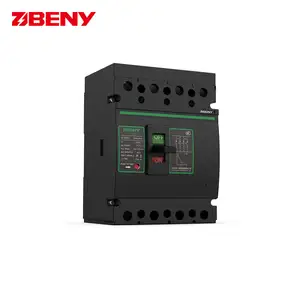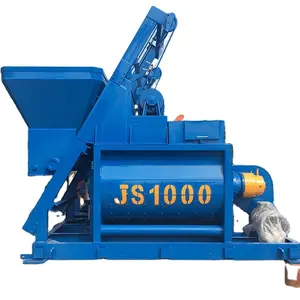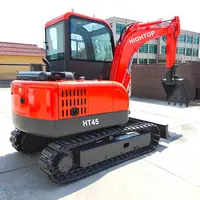
Beny 5years Warranty 20ka 1000v Dc Mccb 125a Moulded Case Circuit Breakers With Tuv Ce Cb Kema





In a world where space is at a premium, the art of maximizing every cubic meter (CBM) is not just a skill but a necessity. This ultimate guide delves into the realm of 1 CBM volume products, offering innovative solutions for efficient space utilization across various industries. From the compact wonders of bulk bags to the transformative magic of multi-functional furniture and space-saving appliances, we explore how these products are revolutionizing storage, transportation, and living spaces. Whether you're a logistics expert, a small apartment dweller, or a sustainability advocate, understanding the power of 1 CBM products is key to optimizing your space and operations.

Understanding the concept of 1 cubic metre (CBM) is essential when considering space and volume for various products. In the International System of Units (SI), a cubic metre is the volume of a cube with edges one metre in length. This unit of measurement is significant in numerous industries, particularly when assessing the size and distribution of goods. The symbol for cubic metre is m³, which is universally recognized and used when superscript characters are not available, with alternative notations such as m^3, M3, m**3, cum, m3, CBM, and cbm being common in different contexts. These notations are especially useful in digital communication where markup or special characters cannot be used. A cubic metre of water at its densest temperature (3.98 °C) and standard atmospheric pressure weighs 1000 kg, or one tonne, illustrating the relationship between volume and mass. This measure becomes a practical reference for understanding the capacity and weight of 1 CBM volume products, which are prevalent on platforms like Alibaba.com. The Unicode symbol for cubic metre is ㎥, ensuring a standardized representation across various digital platforms.

The Alibaba platform showcases a diverse range of 1 cubic meter (CBM) volume products, designed to cater to various storage and transportation needs. Among these, the jumbo bags, also known as FIBC (Flexible Intermediate Bulk Containers), stand out for their capacity to handle significant quantities of materials. These bags are typically used for storing and transporting a ton of products like construction materials, sand, and soil. They are woven from polypropylene, ensuring durability and the ability to withstand heavy loads.
Another variant includes the ventilated big bags, which are specialized for the storage and shipment of firewood, allowing for air circulation to maintain the quality of the contents. Additionally, bulk bags for industrial use are available, capable of holding up to 1.5 tons, and are commonly utilized for transporting products such as copper powder, cement, beans, rice, and other crops. These bags often come with features like top spouts for easy filling and discharge.
For more specific applications, customizable big bags are offered, which can be tailored to meet the unique requirements of different commodities, enhancing their versatility. The use of PP (polypropylene) material is prevalent in these products, which not only provides strength but also contributes to their reusability and recyclability, aligning with sustainability efforts. These 1 CBM volume products are instrumental in optimizing space and efficiency in various industrial sectors.
Our selection of compact furniture is designed to address the challenges of limited space while maintaining style and functionality. Among these, the expanding tables stand out for their versatility. These coffee tables effortlessly transform into dining tables, catering to different occasions without occupying additional space. Similarly, a piece serves as a console that can expand into a full dining table, exemplifying smart design. Another table offers a coffee to dining conversion, highlighting the adaptability of these furniture pieces. Each table incorporates an innovative mechanism that allows for a seamless transition between forms, making them ideal for small living spaces. The materials used in the construction of these tables ensure durability, while their design reflects a modern aesthetic that can complement various interiors. These multi-functional tables not only optimize living areas but also offer a practical solution for those seeking to maximize their space efficiently.
Compact kitchen appliances are essential for maximizing efficiency in small living spaces. These appliances are designed to provide full functionality while occupying minimal space, making them ideal for urban apartments, condominiums, and tiny homes. A thoughtfully arranged kitchen with compact appliances can transform even the smallest of spaces into an efficient cooking and baking area.
Space-saving refrigerators come in under-cabinet models for basic needs or slim full-height versions with integrated freezers, ensuring food preservation without taking up excessive space. Compact ovens offer features like convection cooking and self-cleaning, with dimensions that cater to limited spaces. Cooktops, separate from ovens, can have one to four burners and are designed to fit neatly into countertops.
Ranges that combine an oven and cooktop in one unit are space-efficient, with some models featuring additional broiler drawers. Dishwashers, while often omitted in compact kitchens, are available in smaller widths, providing the convenience of easy cleanup without sacrificing significant storage space. When choosing these appliances, consider internal storage components, energy efficiency, and how they integrate with the kitchen's design and layout.
In addition to kitchen appliances, compact laundry solutions like washers, dryers, or combo units are available to fit into closets or small spaces, offering the convenience of home laundry without requiring a dedicated room. These appliances are designed with reversible doors and stackable options to adapt to various layouts, ensuring that every square inch is utilized effectively.
Efficient storage solutions are essential for maximizing space, particularly when dealing with limited areas. Products like high-durability totes and weather-resistant containers offer a balance of durability and convenience. These storage options are crafted from materials like polyethylene, which provides flexibility and resistance to cold temperatures, ensuring they don't become brittle or crack under stress.
Features such as latching lids and waterproof seals are crucial for protecting contents against moisture and pests, making these containers suitable for various environments. Stackable designs and single-size lids enhance the usability of these storage solutions, allowing for neat organization and efficient use of vertical space. Whether for personal use or industrial applications, these storage containers optimize space without compromising on the security or integrity of the stored items.
Moreover, the adaptability of these storage solutions to different settings, from closets to garages, underscores their versatility. While some options are designed for more demanding storage needs, others focus on providing a secure seal with foam inserts to prevent ingress of moisture and dust. The selection of the right storage container depends on the specific needs, whether it's for long-term storage or frequent access, highlighting the importance of features like ease of opening and stackability.

CBM, or cubic meter, is a critical measurement in shipping that represents the volume of a shipment. It's a standard unit used in various industries to calculate the space required for transporting goods. In the context of different industries, understanding CBM is essential for optimizing container space, especially when dealing with international freight. The volume of a shipment influences the number of products that can fit in standard-sized shipping containers, such as 20', 40', 40' HC, and 45' HC. This knowledge is particularly relevant when loading items with irregular sizes and shapes, where the actual capacity used within a container is typically around 80% of its maximum due to the unusable space left by packaging and stowing methods. For businesses involved in logistics, warehousing, and distribution, calculating CBM accurately is vital for efficient space management and cost-effective transportation, whether by ocean, air, or road freight.
CBM, representing cubic meters, is a critical measurement in the realm of freight shipments. It is essential to understand that the volume of your shipment influences the shipping cost. The calculation of CBM is straightforward when dealing with uniform carton sizes. For instance, if you have multiple cartons with varying dimensions, you'll need to calculate the CBM for each carton separately and then sum them up to get the total CBM.
To illustrate, consider a shipment comprising different-sized cartons. If there are two cartons each with dimensions of 30cm x 30cm x 30cm, and another three cartons each measuring 50cm x 50cm x 50cm, the CBM for each size is calculated and then added together to determine the shipment's total CBM. This method ensures that the space occupied by the shipment is accurately quantified, which is particularly relevant for 1 CBM volume products that are designed to maximize space and efficiency.
Sustainable construction materials are pivotal in reducing the environmental impact of the building industry. Bendable concrete, or Engineered Cementitious Composite (ECC), exemplifies innovation in this field with its enhanced flexibility and durability compared to traditional concrete. Its composition includes small, polymer-derived fibers that contribute to its ductility, allowing it to absorb shock more effectively and resist cracking. Moreover, ECC's sustainability is augmented by its ability to be infused with carbon dioxide, which not only strengthens the material but also reduces cement usage and associated carbon emissions.
Mass timber represents another sustainable material, offering a greener alternative to conventional steel and concrete. Comprising large prefabricated wood components such as cross-laminated timber and glue-laminated timber, mass timber contributes to a lower carbon footprint in construction. Its use can lead to faster building times and less waste, further diminishing the environmental impact.
Salvaged materials also play a crucial role in sustainable construction. By giving a second life to previously used materials, the construction process becomes more eco-friendly, keeping waste out of landfills and potentially lowering costs. Bamboo is an additional sustainable resource, recognized for its flexibility and minimal waste production, as the entire stem can be utilized, and leftovers are compostable. These materials not only aid in constructing durable and sustainable buildings but also align with the increasing demand for environmentally responsible construction practices.
Optimizing space with 1 CBM products offers several advantages, mirroring the benefits of effective space utilization. For instance, maximizing space use with compact items can lead to significant cost savings. By understanding how much space is actually in use, companies can avoid unnecessary expansion, reducing real estate expenses and potentially repurposing existing areas for better efficiency.
Furthermore, choosing 1 CBM products supports sustainability efforts. Less space usage not only cuts costs but also aligns with environmental responsibility, helping businesses minimize their carbon footprint. This is particularly relevant for organizations aiming to balance profitability with ecological and social considerations.
Productivity can also see a boost from well-chosen 1 CBM products. By facilitating better organization and reducing clutter, these items can contribute to a more efficient workflow, enhancing overall productivity. Additionally, the right selection of space-optimized products can improve the employee experience, offering a more flexible and comfortable working environment that can adapt to various workstyles and preferences.
Lastly, incorporating 1 CBM volume products into the workspace is a step towards future-proofing the office. As the nature of work continues to evolve, having adaptable and space-efficient solutions ensures that the workplace can meet changing demands without the need for constant physical restructuring.
Embracing 1 CBM volume products is more than a mere organizational tactic; it's a strategic move towards sustainability, cost-efficiency, and enhanced productivity. Throughout this guide, we've seen how these products serve multiple industries, from the intricacies of shipping logistics to the nuances of compact living. They not only ensure that every square meter is utilized to its fullest potential but also align with eco-friendly practices by minimizing waste and carbon emissions. The versatility of these products, coupled with their ability to adapt to the evolving demands of work and living spaces, positions them as indispensable tools for the future. As we continue to navigate the challenges of space and efficiency, the insights provided here will help businesses and individuals alike to make informed decisions, fostering a more organized, sustainable, and productive environment.